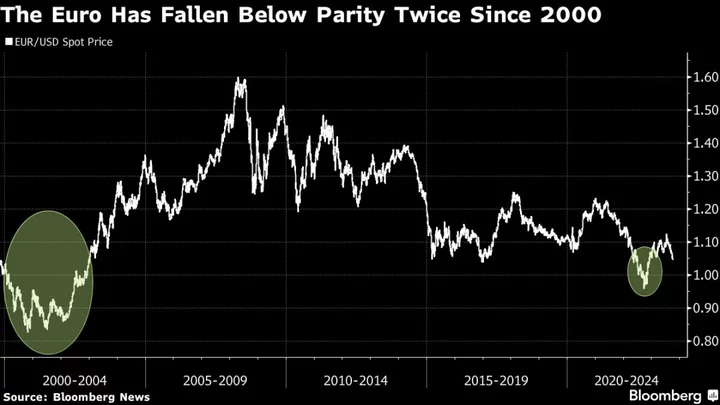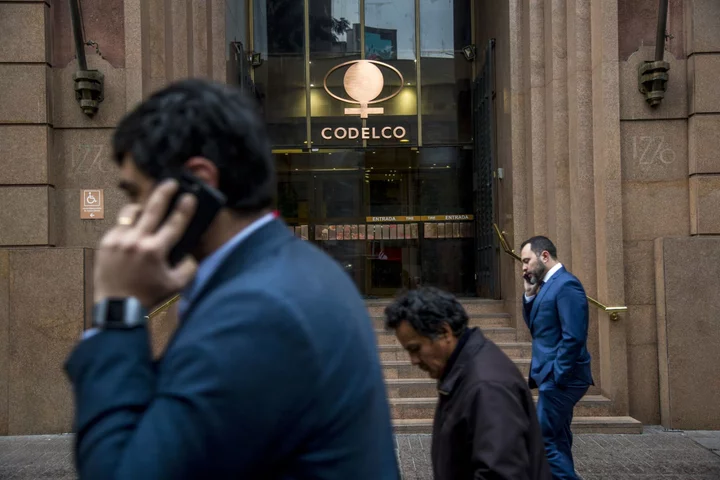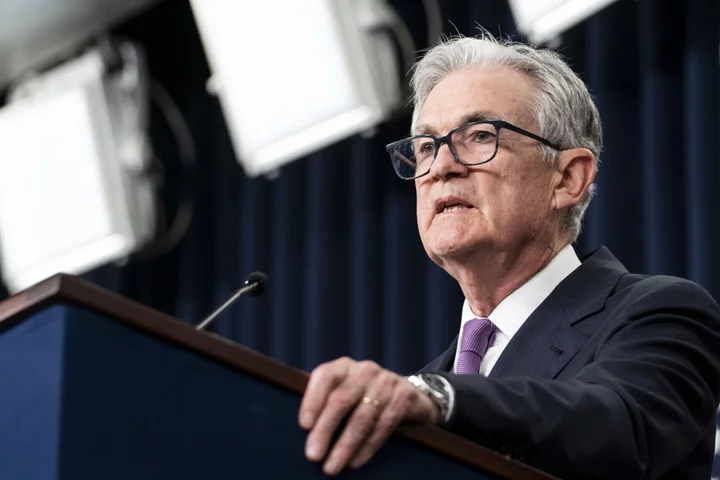It’s been less than a year since one euro was worth a dollar, and talk of the common currency falling back to that level is once again creeping into the market’s discourse.
Over the past two weeks alone, analysts at firms including Nomura International Plc, Rabobank and ING Groep NV have slashed their forecasts to just shy of $1. References to the word “parity” in Google searches have surged, and the odds of the euro hitting that level by early next year have more than doubled, according to a Bloomberg options model.
A big part of the gloom has to do with US yields, which are climbing fast and bolstering the dollar. But there are important domestic factors at play too. Growth in the euro-area’s biggest economies remains sluggish, fears about Italy’s bloated government debt load are bubbling up again, and rising energy prices are reviving concerns over inflation.
If oil prices surge past $110 per barrel, “it will be difficult for the euro to avoid parity,” said Jordan Rochester, a FX strategist at Nomura. The levels of “US rates suggest that the euro should be at $1.01 to $1.03 already.”
The currency was trading around $1.06 on Friday. Rochester recently revised his forecast for the euro to $1.02 by the end of the year from $1.06.
When the euro fell to $1.00 last year — the first time in more than two decades — Europe was reeling. The war in Ukraine had just kicked off, cutting the region’s gas supply. The European Central Bank was embarking on its tightening drive and investors were worried higher interest rates would tip Italy’s indebted government over the edge.
While a lot has changed since then, the euro’s slide shows how bleak the picture remains, especially now that steeper borrowing costs are filtering through the economy. The common currency has weakened about 6% from a peak of $1.13 in July.
Read more: Once Unthinkable Bond Yields Now the New Normal for Markets
For some, that means betting on a slide to parity may prove to be a pain trade. Much of the pessimism is already baked in to the euro’s price, according Andreas Koenig, head of global FX at Amundi.
“Of course it’s a possibility, but I don’t think we will see parity this time,” said Koenig, who sees the euro recovering to $1.07 by the end of the year. “I think we have now priced everything positive for the dollar.”
Analysts also appear skeptical for now. The median forecast in a Bloomberg survey sees the euro bouncing to $1.08 by the end of the year.
Still, the longer the euro remains weak the more it risks feeding into inflation. While the ECB doesn’t have a currency target, it typically keeps an eye on the foreign-exchange market, cognizant of the impact it might have on consumer prices.
What Bloomberg’s Strategists Say...
The greenback growing stronger in coming months is becoming a consensus trade and that of itself should keep the euro bears on their toes. Even so, a lot of negatives are already priced in and a fresh narrative needs to build if the common currency is to retreat even further toward the levels last seen almost a year ago.
- Vassilis Karamanis, FX strategist at Bloomberg
Even if parity is not reached, the growing risk of such an event shows the odds are not in the euro’s favor. Stephen Jen, CEO at Eurizon SLJ Capital, said the current weakness in the European and Chinese economies, along with strong US activity, are a recipe for continued dollar strength and euro weakness.
“Investors are still very happy to add to their underweight euro positions,” said Michael Metcalfe, global head of macro strategy at State Street Global Markets.









